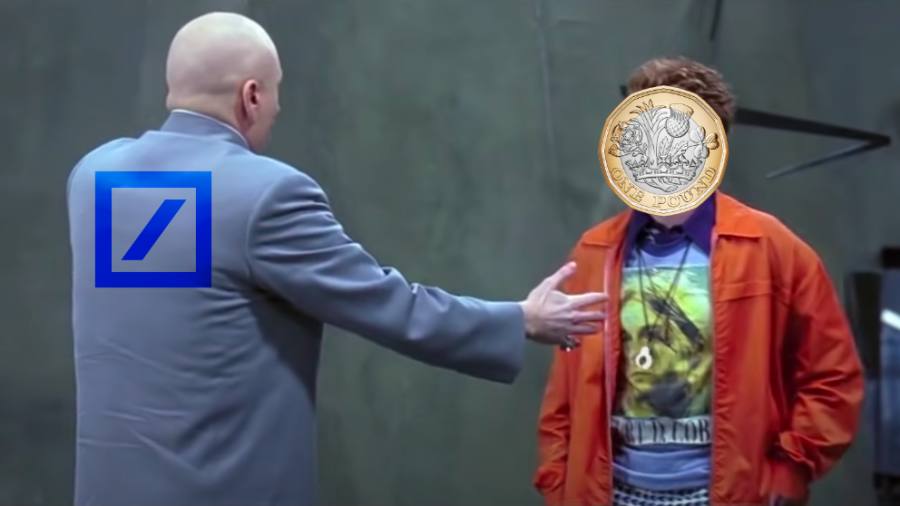OMG, guess who’s gotten back together?!
That’s right, Deutsche’s bullish on sterling again. They totally emailed everyone this afternoon like:
For the first time in a long while we turned positive on the pound. The policy mix finally looks more favourable with high real rates and a much improved external balance picture compared to September.
And the pictures are SO CUTE:
The Great Winchester Street gang were some of the pound’s biggest critics last year, culminating in some wonky beef with Barclays. In early September, when Liz Truss was taking her first baby steps as arguably Britain’s biggest prime ministerial failure, they wrote:
The UK is increasingly at risk of no longer attracting enough foreign capital to fund the external balance. If so, sterling would need to depreciate materially to close the gap in the external accounts. In other words, a currency crisis typically seen in EM.
As it turned out, Truss and ill-fated/informed chancellor Kwasi Kwarteng worked to massively accelerate that process — but that’s all history now.
Since the UK’s coup change of management, Deutsche has warmed up to the pounds and pence, calling themselves “tactically bullish” in their start-of-year FX “blueprint”.
Strategist Shreyas Gopal expanded on the pound-pitching in a note yesterday, writing:
Rewind the clock five months or so and the combination of an extreme current account deficit (-7.6% of GDP in Q1-22) from the surge in gas prices and firmly negative real yields had materially increased the pound’s vulnerabilities. But UK 5y real yields are now up around 175 bps since the end of August — comfortably more than for any other G10 currency — and have settled even higher (relative to peers) than before the Brexit referendum.
He continues (our emphasis):
To be sure, some of the improvement in the data is largely a function of (erratic) gold “exports”, which the most recent monthly data suggests continued well into the fourth quarter. But even after stripping out these erratic flows the underlying current account deficit is likely to have bottomed out for now, especially with energy prices falling.
Indeed, gas prices are currently tracking around 20% below where they were this time last year, even before the invasion of Ukraine. The longer this continues, the larger the reversal of last year’s trade deterioration, and the further sterling’s vulnerability gap will shrink.
The chart from the pack caught our eye, not least because we’re suckers for a nice slope chart:
Deutsche’s newfound cheer also means it’s realigned with Barclays, which says a recent patch of weakness in sterling is “overdone”. Barclays’ list of four reasons to buy sterling ahead of February’s Bank of England meeting noted apparent Brexit progress, resilient demand and signs of continued wage growth strength — anathema to the Monetary Policy Committee:
All told, the risk of so-called second-round effects that lead to inflation persistence is non-negligible. On the contrary, there is evidence that such effects are already materialising given trends in underlying inflation. This situation calls for more tightening by the central bank in order to align demand with supply and arrest this process.
Still, we won’t let that loose sense of an alarm (reinforced by XpertHR data released today that suggests UK pay settlements are accelerating) get in the way of this heartwarming story of reunion. 👩❤️💋👨
Deutsche, welcome back to Team Pound. Howay the quids!
Read the full article here





